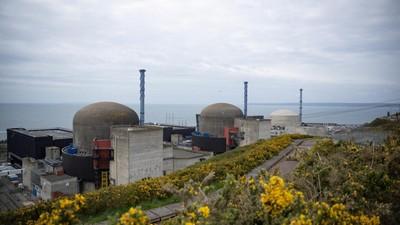
France: Most powerful nuclear reactor finally comes on stream
Paris: France this week connected its most powerful nuclear power reactor to the national electricity grid in what leaders hailed as a landmark moment despite years of delays, budget overruns and technical setbacks.
The Flamanville 3 European Pressurized Reactor in Normandy started providing electricity to French homes at 11:48 am (1048 GMT) Saturday, the EDF power company’s CEO Luc Remont said in a statement.
“Great moment for the country,” President Emmanuel Macron said in a statement on social network LinkedIn, calling it “one of the world’s most powerful nuclear reactors.”
“Re-industrialising to produce low-carbon energy is French-style ecology,” he added. “It strengthens our competitiveness and protects the climate.”
The French-developed European Pressurised Reactor project, launched in 1992, was designed to relaunch nuclear power in Europe after the 1986 Chernobyl catastrophe in Soviet Ukraine, and is touted as offering more efficient power output and better safety.
The EPR, a new generation pressurised water reactor, is the fourth to be finished anywhere in the world. Similar design reactors in China and Finland came online ahead of it.
The launch is welcome news for the heavily indebted state-owned energy company EDF after multiple problems extended construction to 17 years and caused massive budget overruns.
Remont of EDF called the event “historic.”
“The last time a reactor started up in France was 25 years ago at Civaux 2,” he said, referring to the Civaux power plant in southwestern France.
The connection was initially scheduled to take place Friday. It is the most powerful reactor in the country at 1,600 MW. Ultimately, it should supply electricity to upwards of two million homes.
The connection to the grid “will be marked by different power levels through to the summer of 2025” in a months-long testing phase, the company has said.
EDF said that starting up a reactor was “a long and complex operation.”
The plant will be shut down for a complete inspection lasting at least 250 days, probably in the spring of 2026, the company added.
Construction of the Flamanville reactor began in 2007 and was beset by numerous problems.
The start-up comes 12 years behind schedule after a plethora of technical setbacks which saw the cost of the project soar to an estimated 13.2 billion euros ($13.76 billion), four times the initial 3.3 billion euro estimate.
The start-up began on September 3, but had to be interrupted the following day due to an “automatic shutdown”. It resumed a few days later.
Generation has been gradually increased to allow the reactor to be connected to the electricity network.
Nuclear power accounts for around three-fifths of French electricity output and the country boasts one of the globe’s largest nuclear power programmes.
That is in stark contrast to neighbouring Germany, which exited nuclear power last year by shutting down the last three of its reactors.
“This morning marks the culmination of a titanic effort that has finally paid off,” Agnes Pannier-Runacher, the outgoing minister for ecological transition, said on X.
“We are drawing all the lessons from this to make a success of the nuclear revival that we decided on with the President of the Republic.”
Macron has decided to ramp up nuclear power to bolster French energy sustainability by ordering six new-generation reactors and laying options for eight more, that could cost tens of billions of euros.
In 2022, he called for a “renaissance” for the country’s nuclear industry to transition away from fossil fuels.
“What we have to build today is the renaissance of the French nuclear industry because it’s the right moment, because it’s the right thing for our nation, because everything is in place,” Macron said at the time.
